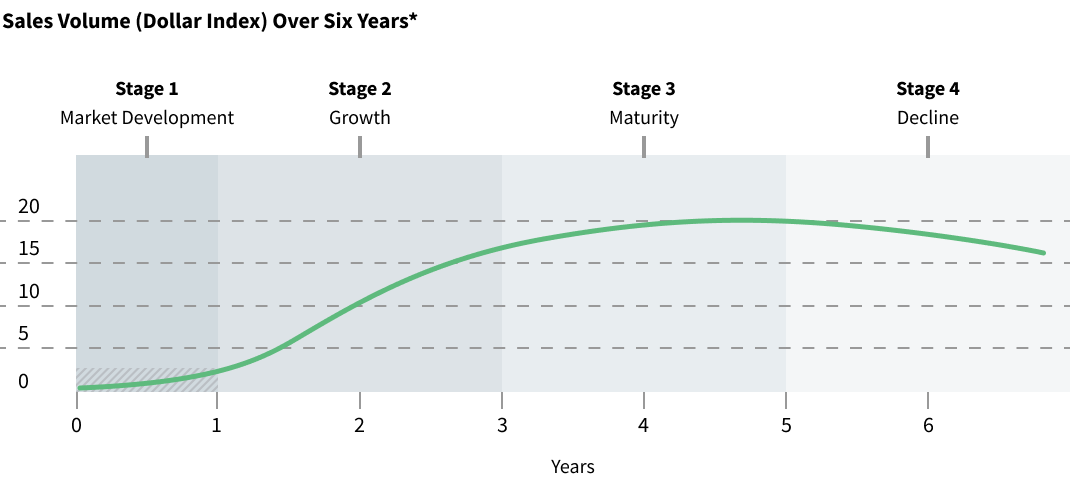What is the product life cycle?
The product life cycle is the progression of a product through five distinct stages: development, introduction, growth, maturity, and decline. The model was developed in 1965 by a German economist, Theodore Levitt, who published an article, “Exploit the Product Life Cycle,” in the Harvard Business Review. This model is still used today by business owners and marketers to make important decisions about advertising budgets, product prices, and packaging.

In a previous eBook, Stack Overflow provided guidance on how a customer-first marketing strategy can help B2B companies build and strengthen their brand. But how can learning about the product life cycle support our marketing efforts?
It's important for marketers to understand which stage your product is in so you can make better decisions for promoting it. As your product matures and grows, you can respond to changing customer needs by highlighting different features, updating messaging, and using new channels to reach specific audiences throughout the life cycle. This is called product life cycle marketing (PLC marketing). Let’s explore the stages of the product life cycle and how to leverage each one for your marketing efforts.